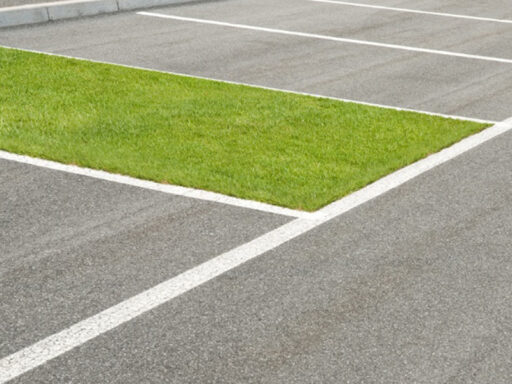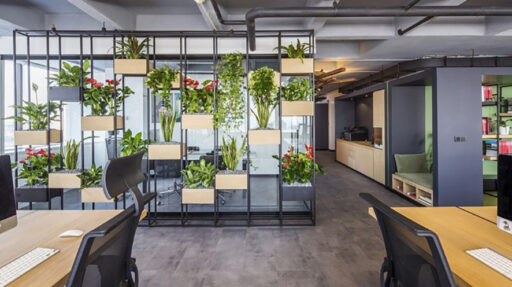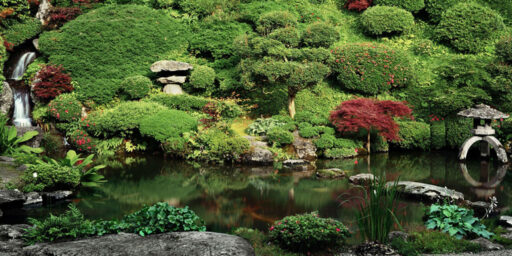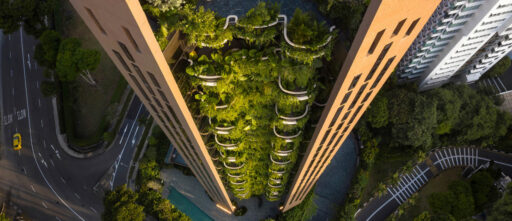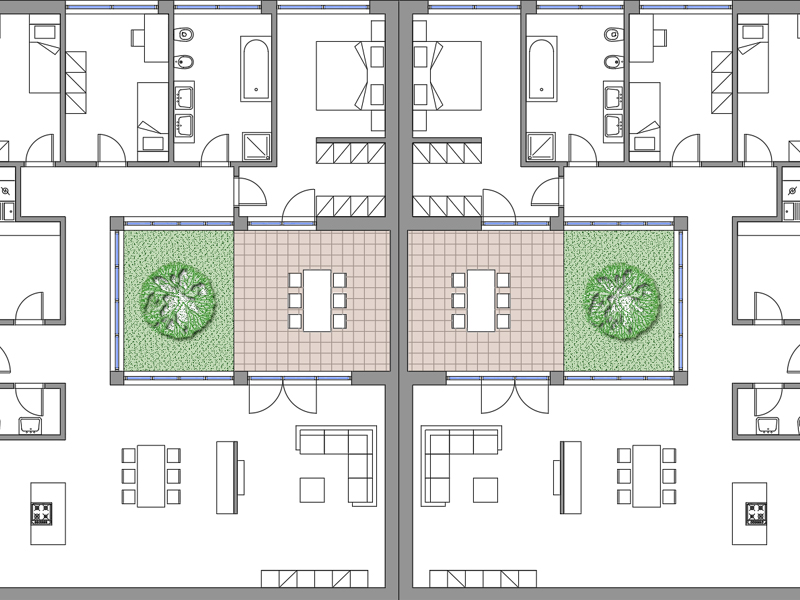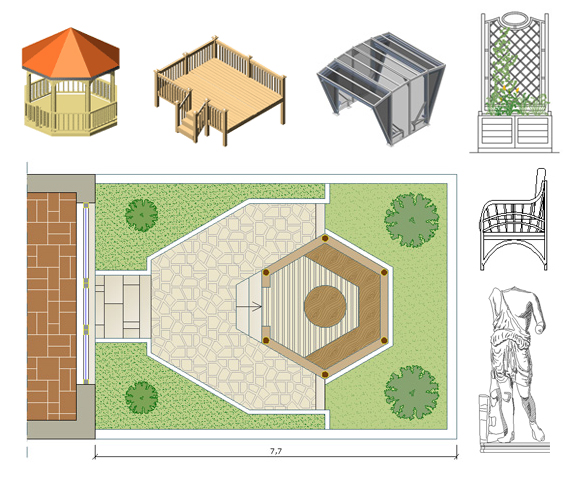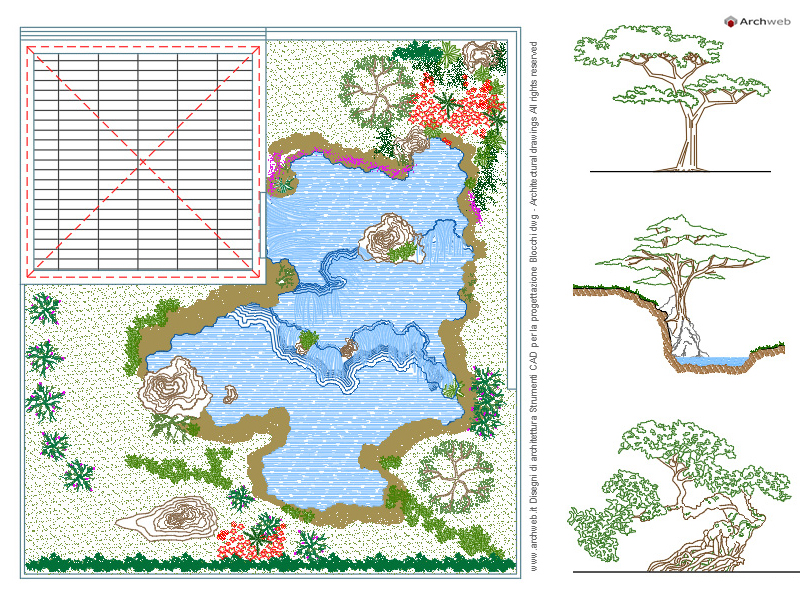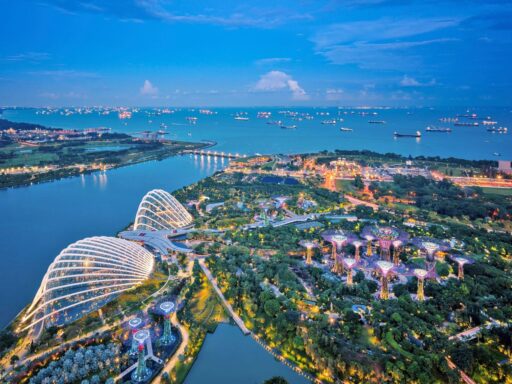Winter Garden
The lost charm of the past
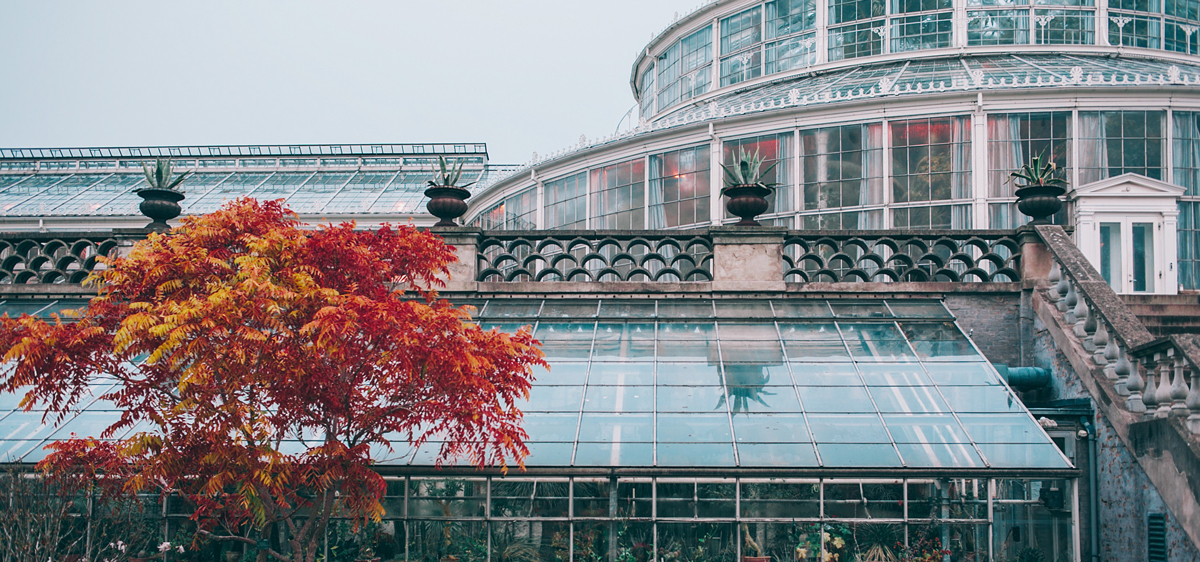
Winter gardens are real architectural typologies with an ancient history and have evolved and transformed over time. Originally a quirk for the few, today habitable spaces, designed for varied uses. In fact, the ancient “orangeries” become lounges where you can spend your free time or remain, as in the past, well-kept greenhouses designed to house plant species and aromatic plants.
But let us now see the main characteristics of this particular solution and some images of a winter garden.
The development throughout history
As announced, the winter gardens boast a solid past history. Initially they spread to northern European countries during the Renaissance period. These are structures closed by glass along all sides and equipped with a roof, built for the shelter of plants and citrus fruits. In fact, the harsh climate of the north did not allow these types of plants to be kept outside during the winter.
The moment of maximum development coincides with the Liberty era, during which the architectural typology was enriched thanks to the sumptuous decorated windows. However, with the outbreak of the Second World War, building activity slowed down and the winter gardens came to an abrupt halt. It will be only in the 70s that this solution will be revived and the designers will develop artifacts interpreted in a modern key. Thus typologies studied on the needs of the client, smaller and intended for domestic use, will spread.

Therefore, winter greenhouses were introduced as additions to stately homes, in order to safeguard the plant types typical of mild climates, even in places where the climate is colder.
Usually this room was positioned on the south-facing side, so as to be sufficiently heated and illuminated. Over the years, the function covered by this architecture has changed, according to changing needs. This is how the winter gardens progressively acquire a social value, becoming living rooms in which to welcome guests, to the point of becoming actual domestic extensions today. In this way, in the case of villas and independent houses, it will be possible to enjoy a closed space but open to the context, a continuum between inside and outside. Equipped with furniture, empty and with only plants and flowers, winter gardens become an added value to which everyone aspires and which turns out to be able to increase the market price of the house.
How many types of winter garden do you know?
As already mentioned, the function of this type of environment consists in recreating temperate climates during the winter season, thanks to the use of full-height windows.
There are different types of indoor gardens depending on the internal temperature you want to maintain and, consequently, on the intended use. When the temperature is constant at 10°, the space is used for the conservation of more resistant plants and shrubs. From 10° to 20° the environment is used for the stationing of more delicate floral types that require higher temperatures. The 24° must be ensured if you want to exploit the space to set up a living room or an area directly connected to the house, so as to guarantee optimal comfort for the user.
But these solutions are also distinguished by their compositional and technological characteristics. Each place, depending on the climatic conditions, has developed over time specific types that are more suited to the needs of the area. This is how in some areas of the world, the winter garden was born as a closed room with large windows facing south. The north walls, on the other hand, were usually leaning against other buildings. Northern Europe, in particular, has seen the spread of large iron and glass structures, designed to capture as much light as possible.
From a structural point of view, today, these typologies can have a rectangular or square plan, be placed against another building or placed in an isolated position. The style can be modern and minimal or recall the ancient structures with richly decorated glass.
As regards the intended use, depending on whether or not the winter gardens are habitable, some elements will be designed differently. The inhabited greenhouse will need carefully chosen windows, possibly with thermal break glass and, if necessary, a heating system. Furthermore, in this case the furniture will be essential, selected according to specific needs, while for greenhouse environments this will not be essential.
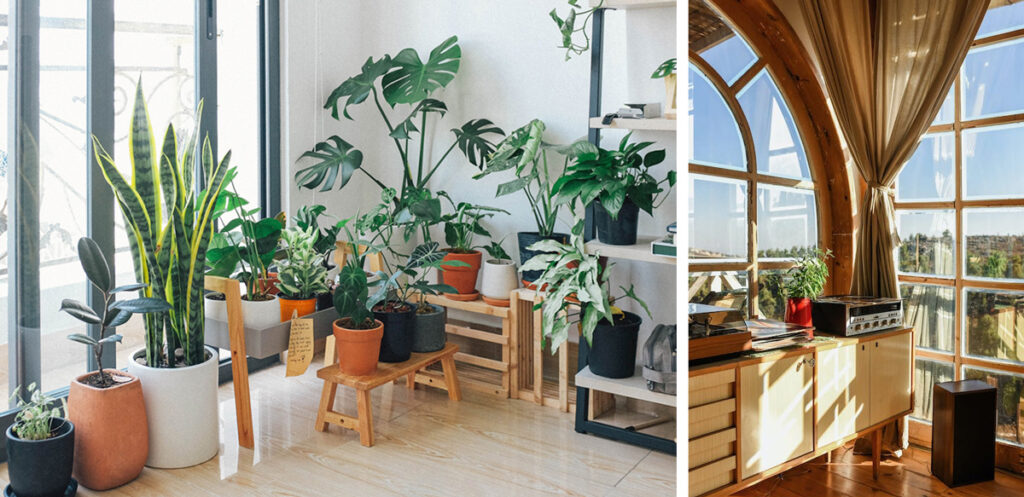
It is therefore clear how the function, the physical composition and the needs of the user are closely linked to each other.
Technological choices
Throughout history, the design of winter gardens has been transformed and developed through the use of different and always cutting-edge technologies and materials.
The first examples consisted of large rooms built in masonry and intended for the exclusive conservation of plant species. Only during the 1800s did the full and heavier walls give way to structures made entirely of iron and glass and equipped with transparent roofs. The glasses were initially very thick, opal and olive green in color but over time they become increasingly transparent and performing. Even the dimensions change: first small tiles produced by hand, then large format slabs produced in series.
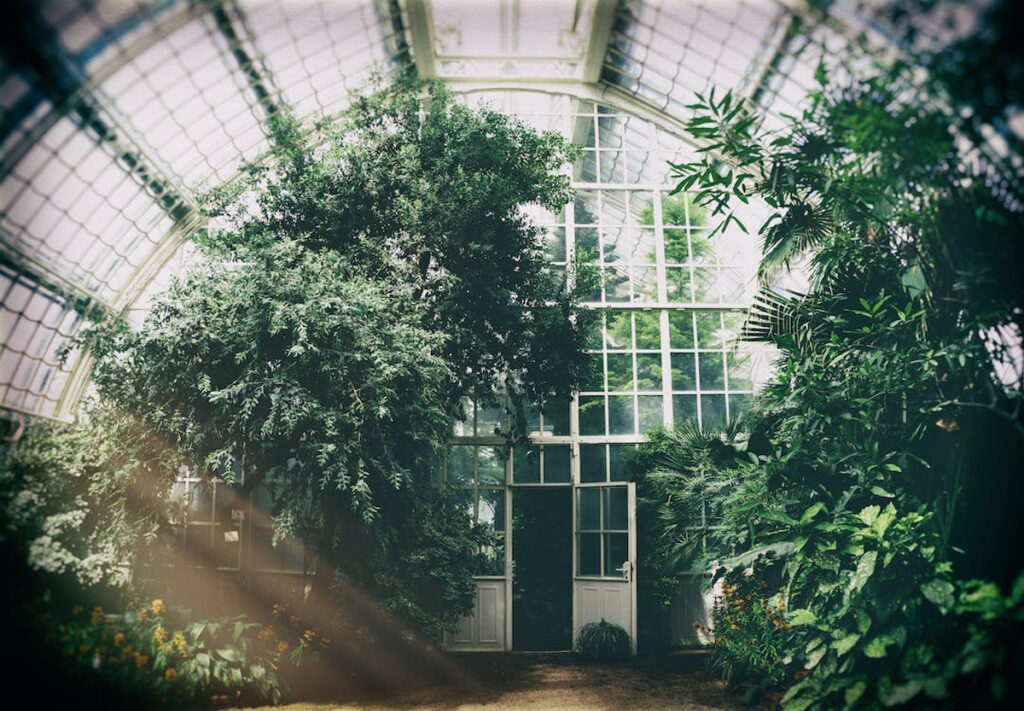
As for the iron supporting structure, it allowed the total use of transparent infill panels and guaranteed solidity over time and high fire resistance. Furthermore, in a period in which the industrial revolution favored the production of large structures, the designers of the winter gardens had the possibility of creating increasingly technological artifacts. At the base, there was the study of materials, their resistance to atmospheric agents and external stresses. The results guaranteed good internal performance and thanks to this, the gardens began to be habitable and soon became real extensions of the houses in the surrounding nature.
Another important aspect in the design of these components has always been the selection of glasses. Today, designers have the opportunity to choose from numerous types of material on the market. The large transparent surfaces that characterize contemporary environments as well as being aesthetically valuable, perform numerous functions.
First of all the light: these environments have always been flooded with natural light and warmed by the heat coming from the sun outside. It is therefore necessary to make the right choice to maximize solar gain in cold seasons and avoid overheating in summer. The winter garden helps to maintain the right internal thermal comfort thanks to the use of double glazing. From this point of view, this component proves to be useful for energy and economic savings in the home.
Furthermore, it is possible to customize the shape, color and sometimes the decorations of the transparent plates, if you want to take up the Art Nouveau tradition of cathedral glass.
It will also be good to ensure good acoustic insulation so as not to compromise the relaxation function during free time.
How to organize a winter garden
If you are lucky enough to be able to enjoy an indoor garden, it will be optimal to use it as a living room or additional space in the home. Depending on the needs, the environment must be furnished in order to be pleasant in appearance but also functional.
Here are some ideas to make the space comfortable and practical.
- Il reading corner
For lovers of reading, the space near the main window can be used for this purpose thanks to the insertion of a set consisting of an armchair, a magazine rack and a small shelf. In this way, natural light will be the best ally for hours of relaxation in the company of your favorite book. To ensure greater privacy in the evening hours, movable curtains and a floor lamp will be perfect, which will remedy the lack of natural light.
- The conversation area
Preferably located in the center of the room, the area intended for welcoming guests becomes the protagonist of the winter garden. Sofas, armchairs and coffee tables will be the masters, space permitting. The added value will be given by one or more carpets which, in addition to furnishing, will heat the environment in any case exposed to the outside through the large windows.
- Loyalty to the original function
Plants and flowers will be welcome in the winter garden which was originally created to house plant species, thus sheltered from external agents. Greenery, in addition to making spaces more vital, helps to keep the indoor air cleaner and the spaces more pleasing to the eye. Potted plants will be the most suitable to insert and can be moved as needed.
- The timeless charm of the fireplace
If there is the possibility, the addition of a fireplace will be decisive in making the environment warmer and more welcoming. Perfect for spending winter evenings without giving up the view of the external environment, the fireplace can be chosen in electric, bioethanol, pellet and wood-burning models. Each model adapts to specific needs and installation possibilities.
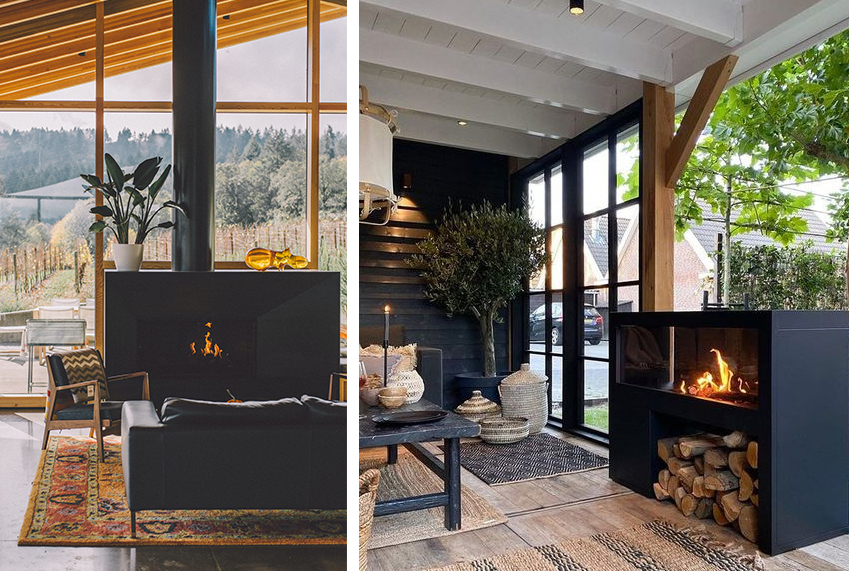
- Bright details
Inside a bright environment, carefully chosen details can only enhance its value. Complements and furnishings must follow the same style and make the spaces comfortable and relaxing. Contemporary style lovers will be able to opt for modern and minimal furniture such as consoles with a metal structure and sofas with a geometric shape. For nostalgics of the past, Chesterfield sofas and chandeliers with glass drops will be perfect to recall the material of the perimeter surfaces and the nineteenth-century style. The general rule is to maintain balance with the rest of the house to ensure the right overall coherence.
Cover photo: Maria Orlova on Pexels
© Archweb.com reproduction reserved – It is possible to share with a link to the page







